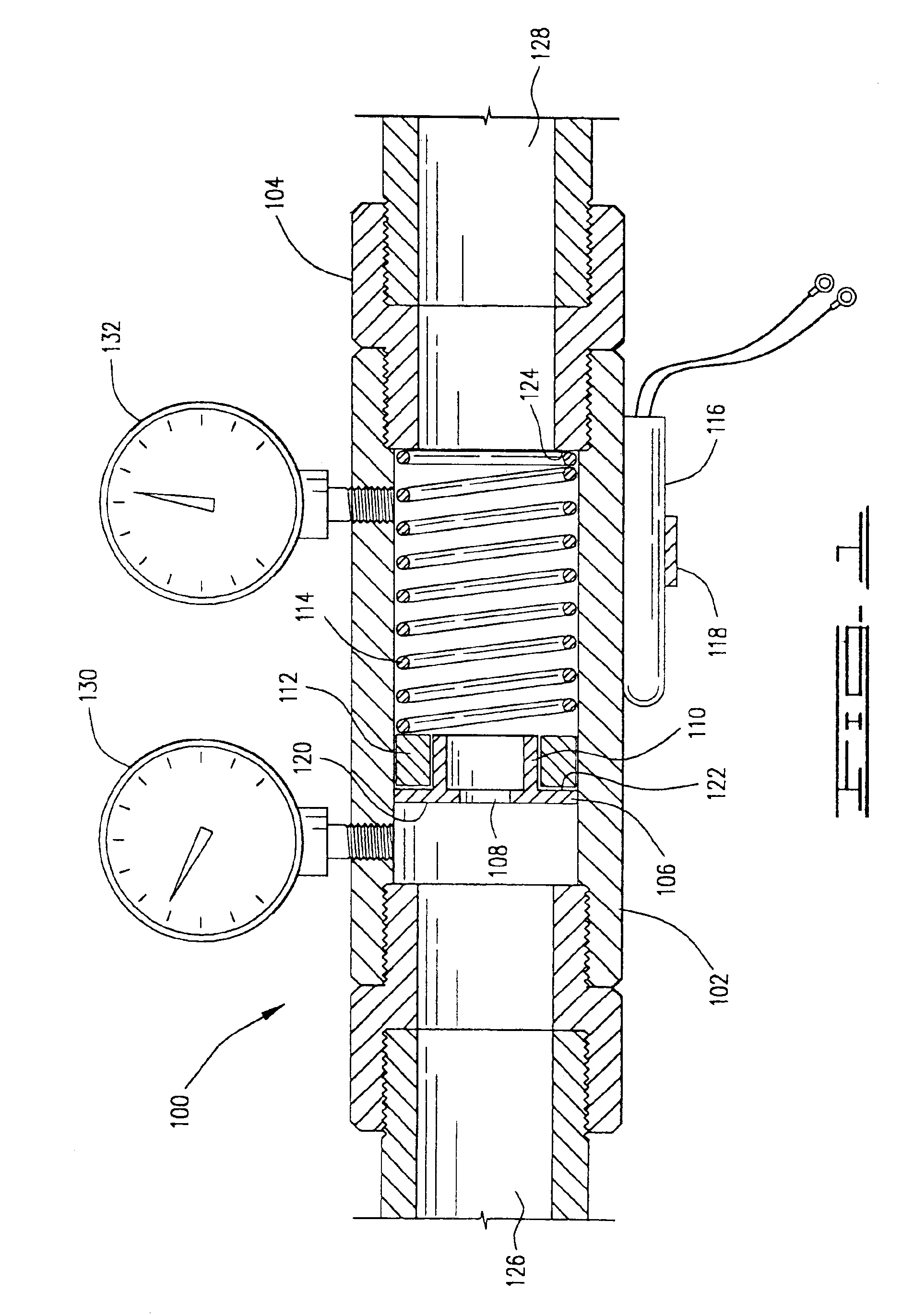Apparatus for flow detection, measurement and control and method for use of same
a flow detection and flow control technology, applied in the direction of instruments, fluid-tightness measurement, liquid/fluent solid measurement, etc., can solve the problems of not working for the same set of piping previously used for both systems, the alarm system used on typical commercial applications will not work for the mps, and the vane-type paddle flow switch is generally not capable of measuring flow with any degree of accuracy. , to achieve the effect of simple operation, easy calibration and higher capacity
- Summary
- Abstract
- Description
- Claims
- Application Information
AI Technical Summary
Benefits of technology
Problems solved by technology
Method used
Image
Examples
Embodiment Construction
[0094]A flow sensor, from which the flow sensor disclosed herein was described in U. S. patent application Ser. No. 09 / 483,999, filed Jan. 18, 2000. That application disclosed a flow sensor, which could be used with a multi-purpose piping system for a fire suppression system / domestic water supply system in a structure. The device was disclosed as being used in a fire protection system, but it was noted that the sensor could be used in any flow measurement situation as well as in situations where a bypass means was desirable. The device disclosed more fully hereinafter, is intended to, and certainly can, be used in any appropriate flow measurement situation. For example, in a petrochemical facility, materials may be passed through a reactor unit to cause a change in their chemical structure. However, should the reactor become plugged, it may become desirable to have a bypass mechanism which allows the petrochemical to be vented to an emergency flare system, rather than causing a rupt...
PUM
 Login to View More
Login to View More Abstract
Description
Claims
Application Information
 Login to View More
Login to View More - R&D
- Intellectual Property
- Life Sciences
- Materials
- Tech Scout
- Unparalleled Data Quality
- Higher Quality Content
- 60% Fewer Hallucinations
Browse by: Latest US Patents, China's latest patents, Technical Efficacy Thesaurus, Application Domain, Technology Topic, Popular Technical Reports.
© 2025 PatSnap. All rights reserved.Legal|Privacy policy|Modern Slavery Act Transparency Statement|Sitemap|About US| Contact US: help@patsnap.com



